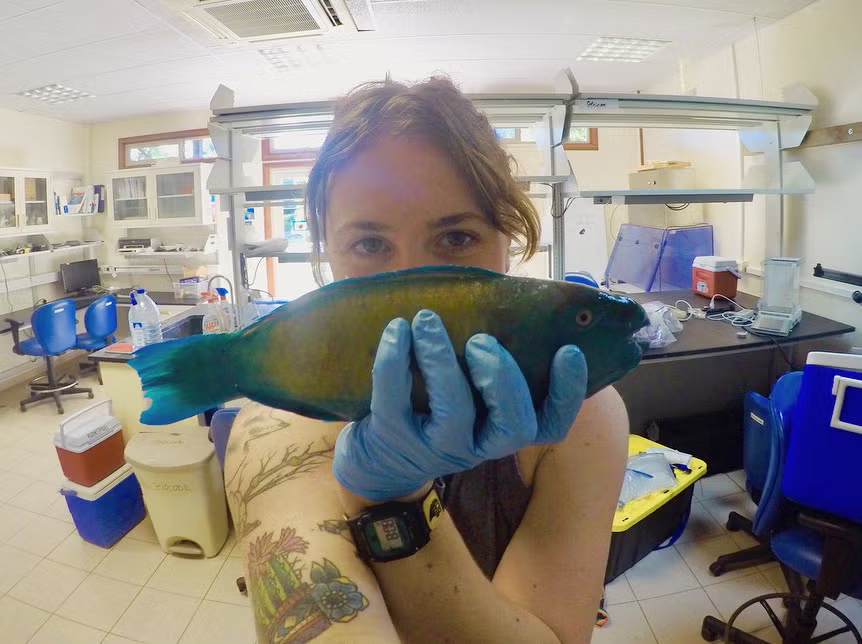
From reefbites, with permission
by Matthew Tietbohl
Animals are well-known to be important ecosystem engineers, impacting their habitats in a number of different ways. Some predators may create landscapes of fear where herbivores avoid, resulting in mosaics of different plant communities across a habitat. Other terrestrial herbivores, like elephants can impact their environments by destroying trees and promote the growth of other vegetation in forests. The same is true of fish on coral reefs. Their feeding activity can impact animal species or algae they eat (top-down effects) and their waste products can fuel the growth of microbes or algae (bottom-up effects). However, these two different types of impacts are seldom studied in tandem.
A new study by Katrina Munsterman et al. (2021) looked at both top-down and bottom-up effects in herbivorous fish communities on backreefs in Moorea in the tropical Pacific Ocean.


